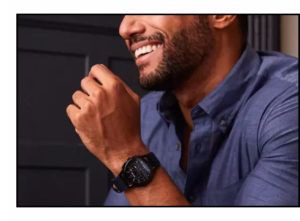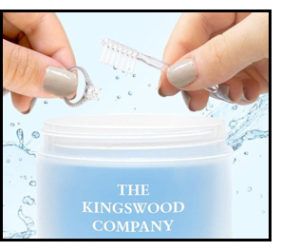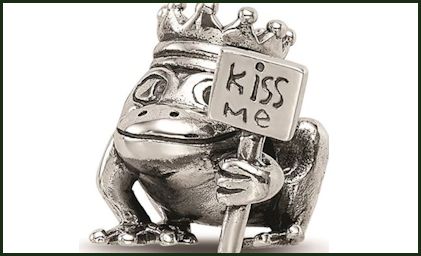Content Marketing Drives Sales
Content marketing is one of the most effective ways for brands to actively engage with customers.
Creative content can generate new leads, and engage and entertain loyal customers. More than a quarter of U.S. adults are always online, part of the 77 percent who go online once and up to several times a day, finds Pew Research. Worldwide, Statista says the global digital population is just over 4 billion users.
Content Marketing Institute (CMI) statistics show 91 percent of B2B marketers and 86 percent of B2C use content marketing to reach their customers, deeming it a key strategy to promote business. In fact, 72 percent of marketers find content marketing increases engagement and leads.
 Create Calendar
Create Calendar
Fortunately for jewelers, there’s so much to share about the products and services they provide. “The jewelry industry is at such an advantage because the product itself is so visually compelling, with so many amazing stories to create around it,” tells Monica Elias, owner of Elias World Media, in a podcast for The Plumb Club. “There’s magic in storytelling around the products jewelers curate and about their businesses that can be captured in different content.”
To help ensure frequency and consistency in content development, Elias advocates jewelers create a yearlong content calendar around topics, holidays, and fashion and bridal seasons. She suggests jewelers identify a different theme a day for social media posts that get followers back to the website: Monday Moments, Tuesday Tips, Wednesday Wow, Thursday Throwback, Friday Family, and Saturday Styling.
Brainstorm topics that resonate with your customers: Walk through a how to. Offer tips and tricks. Profile employees and customer testimonials. Provide a behind the scenes look. Share the making of a product. Reveal a big announcement. Host an Ask the Expert. Check with vendors for content you can use in your digital marketing campaigns.
Pack with SEO Terms
If you want to get people to your website, your base of digital operations, it’s all about SEO. “Currency of the Internet, SEO is all about words,” says Andrea Hill, owner of Hill Management Group. “The website with the best words, most words, frequently updated words — wins!”
 Consumers might search “jewelry store near me”, but more likely they’re searching for specific things like heart-shaped sapphire pendant in 14K gold bezel setting, says Hill, underscoring the value of compelling descriptions packed with SEO terms.
Consumers might search “jewelry store near me”, but more likely they’re searching for specific things like heart-shaped sapphire pendant in 14K gold bezel setting, says Hill, underscoring the value of compelling descriptions packed with SEO terms.
Product listings, in the back end of most product websites, include SEO analytics set up for search engines, with the title and slug key search-tool words. Hill advocates the title include three to five highly descriptive words about the post, and the slug be a two-line description of great sales copy. “Test things out,” she says. “Experiment with headlines, copy words, and images and see what works.”
Images, CMI finds, widen your audience, as content with images gets more views and shares. Moreover, images that show partial body profiles with product perform better than full body views or only product.
Develop Favorite Formats
Video is expected to account for more than 80 percent of Internet traffic by 2021, with live video representing 13 percent, finds Cisco Systems. By 2022, the networking heavyweight expects nearly half of all devices and connections will be video capable. More than 80 percent of businesses use video for marketing.
Video is a format that’s easy to digest, entertaining, engaging, versatile, and simple to share across platforms. No wonder the world reportedly consumes 1 billion hours of YouTube social video a day, reports the Digital Marketing Institute (DMI), digital marketing media.
“Search engines love videos because they see them as high-quality content, so using videos in various types of content, as well as on your main web pages, can work wonders for your SEO,” reports DMI, as long as the videos are optimized by incorporating the right keywords, solid meta description, and strong title. “Marketers like video because it can give a potentially huge return on investment through many channels.”

Videos excel at giving customers an up-close look at products and services, staff members and your business. In fact, 90 percent of consumers say that a video helps in their purchase decision, finds Social Media Today. It’s not about pitching product, but rather telling stories that inform, educate, connect, and evoke emotions. Start small with Facebook and Instagram Live.
Instagram Stories and Snapchat also are effective for offering consumers short, personal glimpses of what you’re engaged in. What’s cool about these videos is that they’re only up for 24-hours, creating more of a real-time feel. It also gives marketers the opportunity to develop focused, on time-sensitive promotions.
Next to videos, blogs are important channels for content, with 77 percent of Internet users reading them, according to OptinMonster. In fact, 72 percent of online marketers cite blog content as their most effective SEO tactic, and nearly 60 percent say they’ve gained customers specifically through blogging. Look to create content that is evergreen, and provides value to your targeted audience. Listicle and how-to blogs are among the most popular.
Emails Drive Sales
When it comes to driving sales, email beats banner ads, social media native apps, and organic posts by up to 180 percent, finds Cheetah Digital in recent research conducted with Econsultancy.

Almost three quarters of U.S consumers say they’ve purchased a product directly as a result of an email they received. Half of consumers say email is their No. 1 channel to receive offers, incentives, and rewards from brands and retailers. Research reveals that 85 percent of consumers would openly share data in return for services, offers, personalized recommendations, and exclusive content.
“Email is one of the most personalized forms of contact you can do, as the customer has given you permission to send her emails,” cheers Laryssa Wirstluk, founder of Joy Joya Marketing.
Targeted email marketing campaigns present compelling opportunities to communicate with customers in the most relevant way. Jewelers can create categories tagging email subscribers by age group, geographic location, purchase interest, and more








